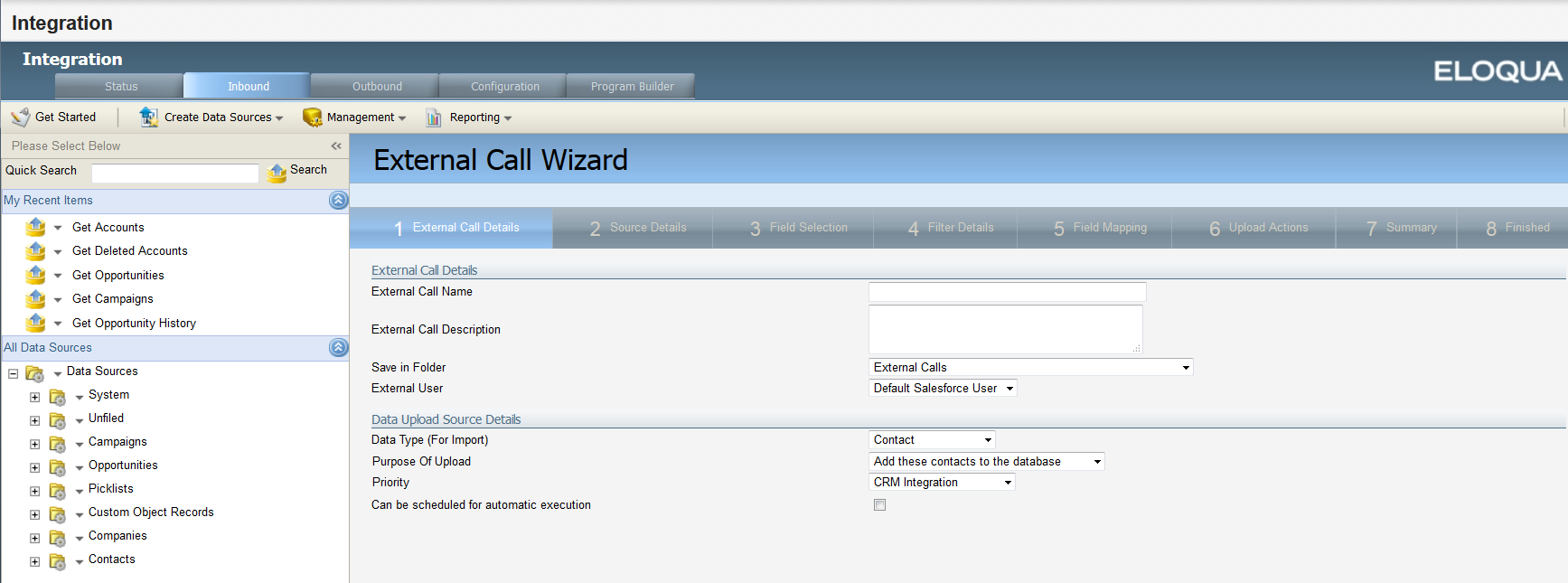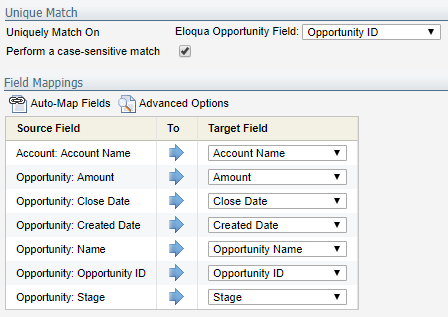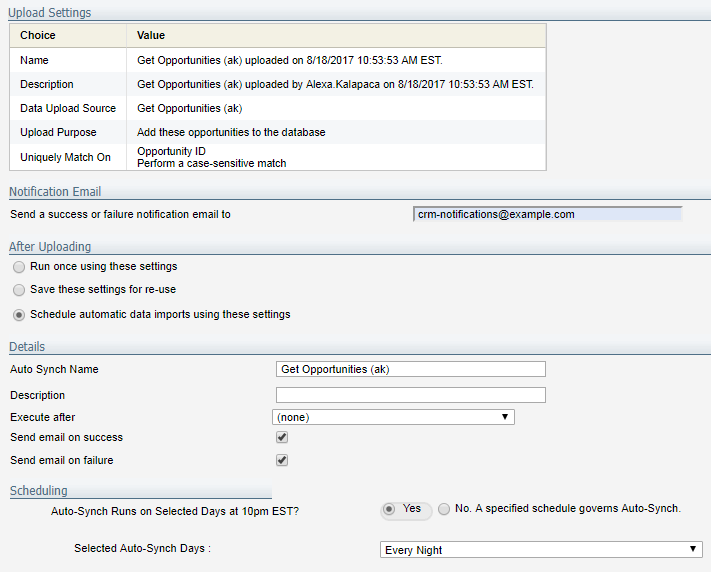Creating the Get Opportunities auto synch
The Get Opportunities auto synch imports opportunities from Salesforce to Oracle Eloqua.
Before you begin:
- This task relates to setting up closed-loop reporting with Salesforce. Refer to Configuring auto synchs for closed-loop reporting for an overview of importing campaigns and opportunities to Oracle Eloqua.
- Before setting up a new auto synch, check to see if it already exists. If the auto synch does exist, you can use the steps below to help configure the auto synch.
To configure the Get Opportunities auto synch:
- Click Settings
 .
. - Click Integration under Platform Extensions.
- Click the Inbound tab.
- Click Create Data Source with External Call in the Create Data Sources menu. The External Call Wizard opens displaying step 1 of 8.
- Configure the settings in the External Call Details step.
- External Call Name: Get Opportunities
- External Call Description: Get SFDC Opportunities
- Save in Folder: Retrieve Data - Opportunities
- External User: Default Salesforce User
- Data Type (For Import): Opportunity
- Purpose of Upload: Add these opportunities to the database
- Can be scheduled for automatic execution: Enable
- Configure the settings in the Source Details step.
- Action: Retrieve
- Entity: Opportunity
- Retrieve 18 character IDs: Enable if applicable (15 character IDs are typical when integrating with Oracle Eloqua)
Note: If you do enable this setting, you must ensure that all auto synchs are set up to retrieve 18 character IDs.
- Click Next.
- Configure the settings in the Field Selection step. Select these Salesforce opportunity and account fields.
- Salesforce Opportunity Fields
- Amount
- Close Date
- Created Date
- Name
- Opportunity ID
- Stage
- Salesforce Related Fields - Account
- Account Name
- Currency (only if you use multiple currencies to record Salesforce Opp Amounts)
- Forecast to Close Date (only if necessary; this field is not required for closed-loop reports)
- Salesforce Opportunity Fields
- Click Next.
- In the Filter Details step, create following filter that looks for those opportunities created since the last import.
- Salesforce Opportunity Fields: Last Modified Date
- Operator: Greater Than or Equal
- Expression: Click
 , then click Add Date. In the Add Date window, select Use the start date of the last successful upload
, then click Add Date. In the Add Date window, select Use the start date of the last successful upload
Note: If you have specified a Record Type ID, create the filter for it.
- Click Next.
- Configure the settings in the Field Mapping step to map the fields you selected in the Field Selection to the Oracle Eloqua campaign fields. The Uniquely Match On field should be set to Opportunity ID.
- Uniquely Match On: Opportunity ID
- Perform a case-sensitive match: Enable
- In the Summary step, review the details. If no changes are required, select Schedule automatic data imports using these settings. Additional details appear.
- Set up the notification details and schedule the auto sync. We recommend:
- Auto Synch Name: Get Opportunities
- Execute after: No change
- Send email on success: Enabled
- Send email on failure: Enabled
- Scheduling: Configure a schedule that matches the frequency of your other Salesforce auto synchs. Oracle Eloqua only imports opportunities modified since the last successful import.
Here is an example completed summary step.
- Click Finish.
To verify that the auto synch was created, on the Inbound tab, click Management > Auto Synchs.
After you finish: Continue to Creating the Get Opportunities auto synch to associate opportunities with contacts.
Configuring auto synchs for closed-loop reporting
Creating the Get Campaigns auto synch
Creating the Get Opportunities auto synch to associate opportunities with contacts


